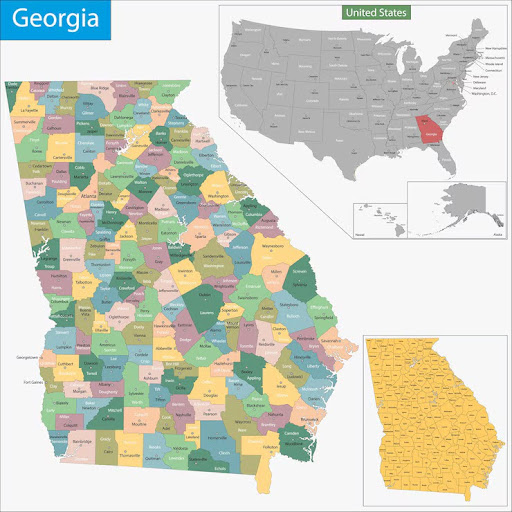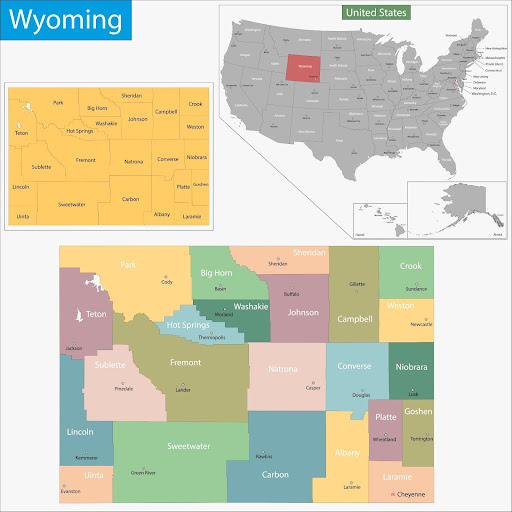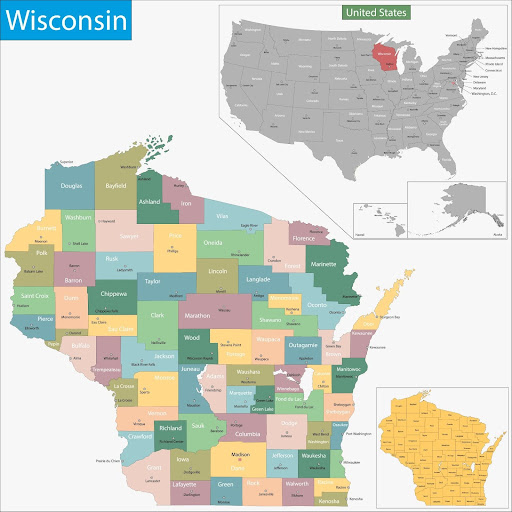Table of Contents
Georgia’s terrain swings from Blue Ridge slopes to coastal plains, each with its own ignition patterns, suppression quirks, and agency players. Add to that a large rural population, active prescribed fire culture, and fast-changing weather conditions, and no two wildfire scenes look the same for fire investigators.
This guide on wildland fire resources in Georgia focuses on what matters most to fire investigators: incident patterns, response assets, agency collaboration, and where to turn when time and accuracy are critical.
For more information on this topic you can check our wildland firefighting resources page.
Live Incident Updates & Maps
When active fire behavior is unfolding, especially near WUI zones, investigators, responders, and dispatchers rely on real-time data. Monitor wildfire activity across Georgia with this live tool:
State Overview
Georgia is among the most forested states in the nation, with over 24 million acres of forestland. Fire behavior varies across the state's diverse regions:
- North Georgia (Blue Ridge and Ridge-Valley): Fires in this region tend to occur in steep terrain and leaf-littered hardwood forests. Access limitations and variable wind exposure make suppression and scene examination more complex.
- Central Georgia (Piedmont Zone): Pine plantations and mixed forests are common here. These regions often see fires from prescribed burns, debris escapes, or equipment use.
- South Georgia (Coastal Plain): Home to the state’s most fire-prone landscapes. Frequent lightning, palmetto understory, and active burn culture contribute to rapid ignition and spread potential, especially during dry fronts.
The Georgia Forestry Commission (GFC) leads wildland suppression statewide on private and state forestlands. Investigators often coordinate closely with GFC rangers and district offices for scene access, dozer line mapping, and cause determination support.
Wildfire Season Timeline
Georgia has two primary wildfire seasons, each shaped by different fuel dynamics and weather patterns:
- Winter-Spring Season (February–May): The most active period for wildfires statewide. Dormant grasses, dry leaf litter, and prescribed fire activity can all lead to escapes or intentional ignitions. Winds associated with frontal systems heighten the spread risk.
- Late Fall Season (October–November): Dry leaf fall combined with low humidity and high winds creates favorable surface fire conditions, especially in hardwood-rich areas in the north.
Fire investigators in Georgia should track daily fire danger ratings from GFC, Keetch-Byram Drought Index (KBDI) values, and the 3-day fire weather outlook for accurate scene context during these windows.
Key State Agencies Involved
- Georgia Forestry Commission (GFC): GFC is the lead agency for wildfire suppression and investigation on private and state-owned forestlands. They handle detection, suppression, prescribed fire, burn permits, and training. GFC operates multiple dispatch zones, and investigators frequently coordinate with county rangers and fire specialists to secure the scene, map fire origin, and preserve evidence.
- Georgia Public Safety Training Center (GPSTC): GPSTC provides wildland fire training, including NWCG-aligned courses. Fire investigators seeking S-130/190, RT-130, or FI-210 certifications may do so through this centralized training hub.
- U.S. Forest Service (USFS): Georgia includes the Chattahoochee-Oconee National Forests and other federally managed lands. Fire investigations on USFS land follow federal protocols, and cooperation with federal Law Enforcement Officers (LEOs) is required for criminal investigations or cross-jurisdictional cases.
Local Wildland Firefighting Resources
Georgia’s suppression model is built on collaboration. Local fire departments are frequently first on scene and often coordinate with GFC for extended attack. Understanding their capacity and reporting processes is critical for investigators working backward from the ignition point.
List of Local/State/Federal Fire Response Agencies
Here’s a look at the local, state, and federal agencies that work together to respond to wildland fires:
- GFC Wildland Fire Units: Equipped with Type 6 engines, tractor-plow units (dozers), and patrol vehicles, GFC units lead suppression on forested lands and issue burn authorizations statewide.
- Volunteer Fire Departments (VFDs): Georgia has several VFDs, many of which have wildland response capabilities. These departments often manage initial attack, especially in rural or WUI zones.
- Georgia Public Safety Training Center (GPSTC): Hosts wildland and structural fire training for municipal and volunteer departments.
- Mutual Aid and Interagency Coordination: Through the Southern Area Coordination Center and the Georgia Interagency Coordination Group, Georgia receives support during high-complexity incidents.
- U.S. Forest Service (USFS): Responds to wildfires on federally managed lands, including Chattahoochee-Oconee National Forests.
Contact Numbers and Emergency Links
- Report a Wildfire: Call 911 or contact GFC’s fire reporting hotline: 1-800-GA-TREES (428-7337)
- Georgia Forestry Commission: gatrees.org
- Burn Permit Information: gatrees.org/burn-permits-and-notifications
- Georgia Public Safety Training Center: gpstc.org
Training & Volunteering
Wildland fire training in Georgia is robust, particularly due to the state’s year-round prescribed fire culture and the demand for suppression-ready personnel.
NWCG-Approved Academies and Centers
The Georgia Public Safety Training Center (GPSTC) offers key NWCG courses, including:
- S-130/S-190/L-180: Required for red card qualification. Delivered in classroom and hybrid formats with periodic field exercises.
- FI-210 – Wildland Fire Origin & Cause Determination: Available through GPSTC and occasionally through regional GFC-hosted workshops. Includes scene documentation, evidence handling, and legal considerations.
Volunteer and Seasonal Training Opportunities
There are opportunities throughout the state for those who want to volunteer or serve seasonally in wildland fire:
- GFC Wildland Firefighter Program: Offers training and deployment opportunities for seasonal staff. These individuals often assist with patrol, mop-up, and fireline construction, roles that frequently intersect with investigative operations.
- Local VFD Wildland Training: Many departments deliver wildland fire modules via GPSTC partnerships or GFC liaisons.
- College and Youth Fire Programs: Institutions like Abraham Baldwin Agricultural College offer wildland certification pathways for forestry and natural resources students.
Stay Updated About Georgia’s Wildland Fire Landscape
Georgia’s fire risk is subtle but constant. With year-round burn windows, shifting suppression roles, and a strong prescribed fire culture, investigators need to remain in tune with both prevention and ignition trends.
From GFC’s tractor-plow operations to the decentralized VFD network, scene control and accurate initial narratives depend on early coordination. Use the live fire maps, stay current on burn permit regulations, and keep strong ties with your local GFC district.
FAQs
How do I report a wildfire in Georgia?
Call 911 immediately. You can also report directly to the Georgia Forestry Commission by calling 1-800-GA-TREES (428-7337).
Can I conduct a controlled burn in Georgia?
Yes, but regulations have changed. As of July 1, 2021, no permit is required for burning hand-piled natural vegetation/yard debris (leaf and limbs only). However, certain conditions must be met, and local ordinances may apply.
Who investigates wildfires in Georgia?
Investigations on private or state-owned land are typically conducted by the Georgia Forestry Commission. On federal land, the U.S. Forest Service leads. Local fire marshals or law enforcement may also assist, especially in cases involving arson or significant property loss.










